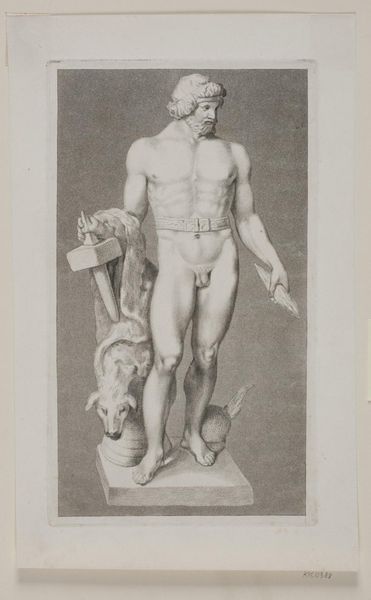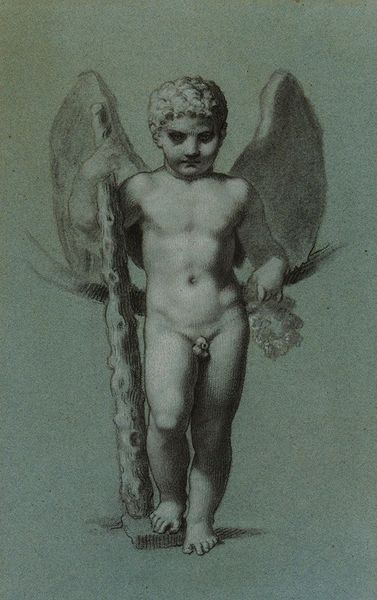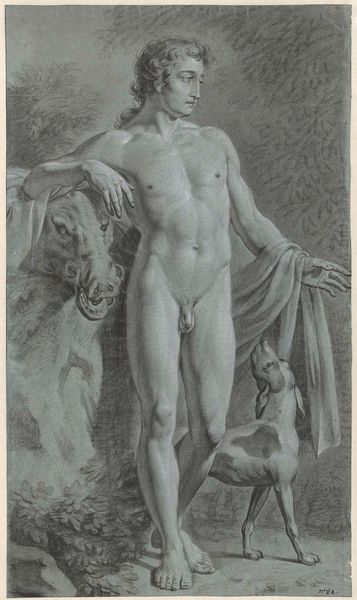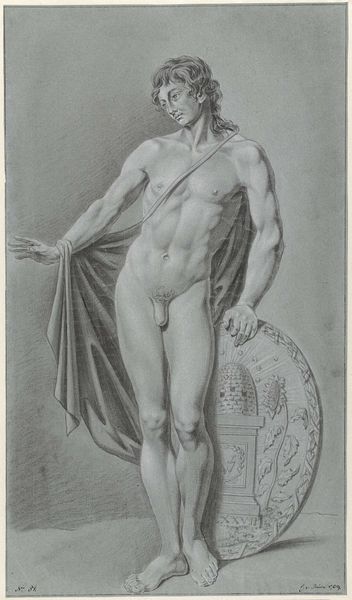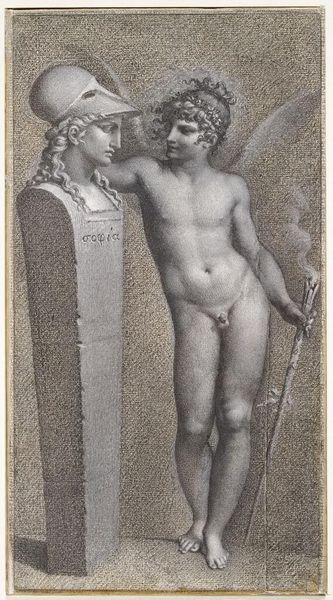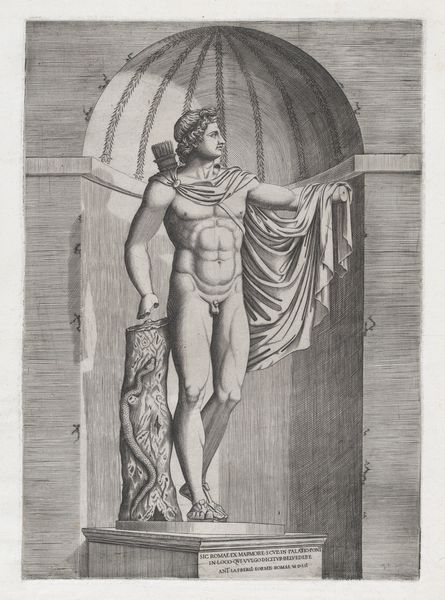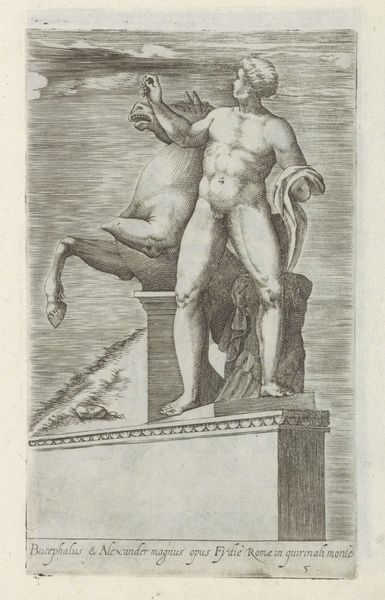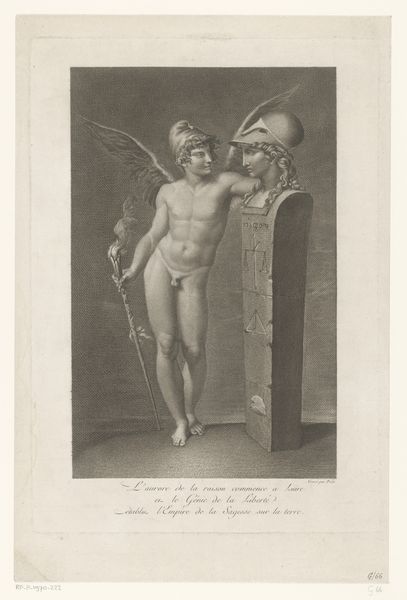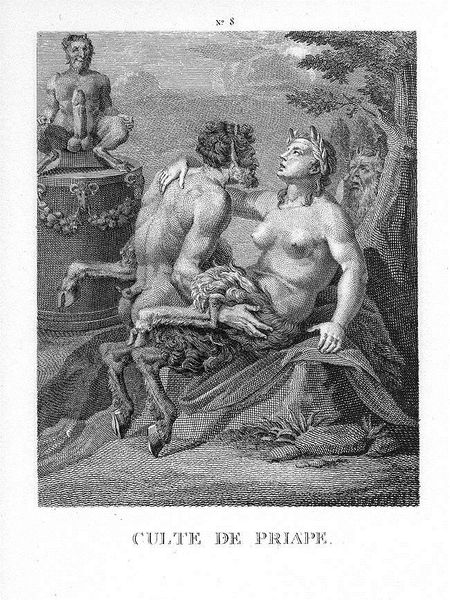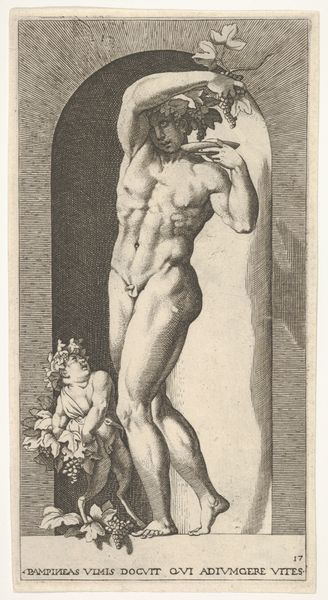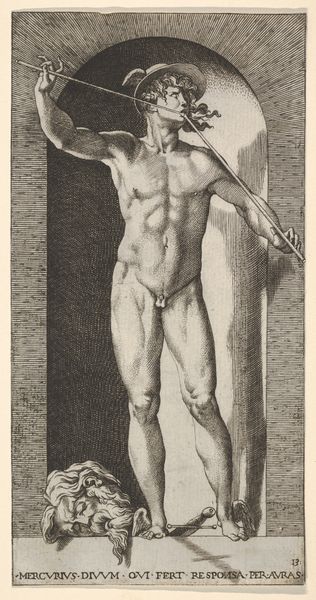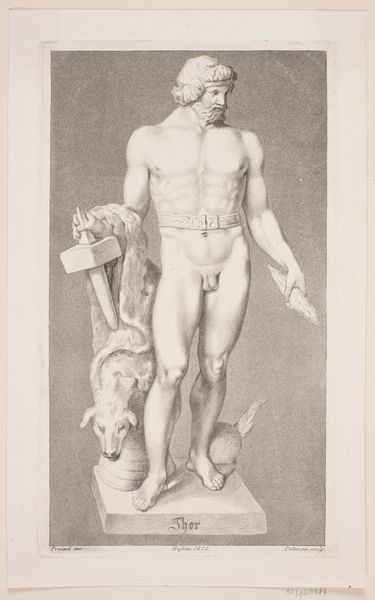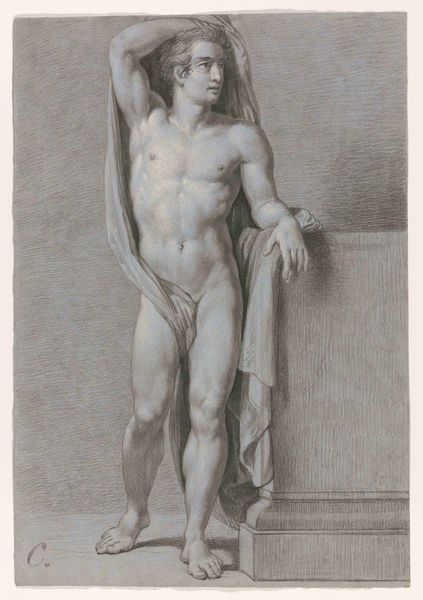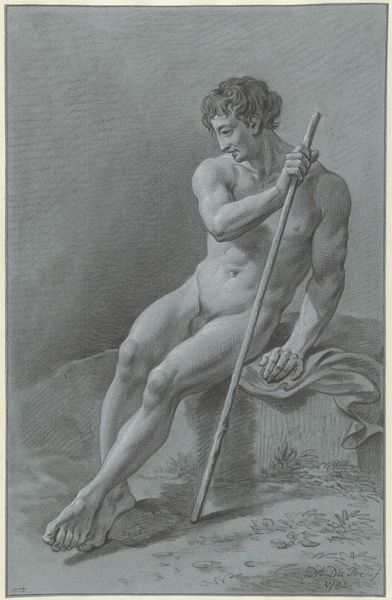
The Spirit of Liberty Establishes the Empire of Wisdom on Earth 1791 - 1810
0:00
0:00
drawing, print
#
drawing
#
neoclacissism
#
allegory
# print
#
figuration
#
line
#
history-painting
#
nude
Copyright: Public Domain
Curator: Pierre-Paul Prud'hon's drawing and print, dating from around 1791 to 1810, bears the grandiose title "The Spirit of Liberty Establishes the Empire of Wisdom on Earth." Editor: It’s immediately striking—a somber yet elegant scene, dominated by a nude winged figure leaning casually against a stone pillar capped by a bust. There's a contemplative stillness, a cool emotional distance despite the nudity. Curator: That coolness is part and parcel of its Neoclassical style. The allegorical scene features this winged youth, likely representing the Spirit of Liberty, posed intimately beside a herm of Minerva, or perhaps more fittingly, the representation of Wisdom. The symbols adorning the herm itself point to complex Enlightenment values. Editor: The scales of justice, the all-seeing eye… those Masonic symbols speak to a very specific cultural moment, don’t they? This is not just Liberty, but Liberty defined by a certain elite intellectual framework. Curator: Precisely. Prud’hon was working during a period of tremendous political and social upheaval in France. This print reflects the aspirations of a post-revolutionary society eager to define itself. The Spirit of Liberty, a classically inspired figure, almost appears to be presenting or introducing the ideals enshrined in Minerva, solidifying revolutionary ideals. Editor: It’s also interesting to consider who this imagery was meant to appeal to. This feels aimed squarely at the intellectual class, at the arbiters of taste who sought to reconcile revolutionary fervor with classical order. How did people actually respond to images such as this at the time? Did it feel too academic, too elitist? Curator: Records show these images held immense power during this period; Prud'hon and others successfully popularized many prints featuring nude allegorical figures like Liberty for distribution across many European territories. These representations aimed to galvanize support by casting contemporary politics inside classical or religious stories. Editor: Looking at it now, removed from its original context, it serves as a powerful reminder that even the most ostensibly universal ideals are shaped by specific historical forces. Even ideals as central as “liberty” need constantly to be assessed and reassessed, depending on socio-political environments. Curator: Absolutely. Prud'hon gives us a vision of liberty, embedded within its own era, inviting us to consider how these symbols continue to resonate, and potentially, to question their current-day meaning.
Comments
No comments
Be the first to comment and join the conversation on the ultimate creative platform.
